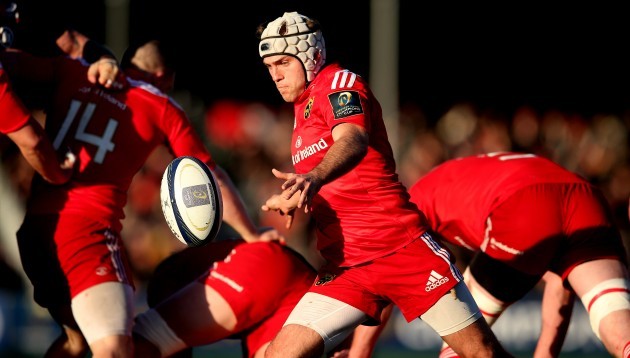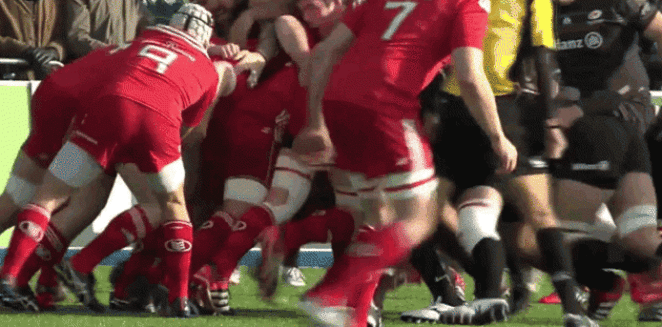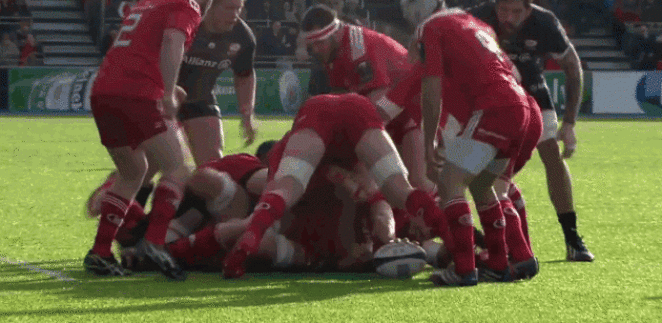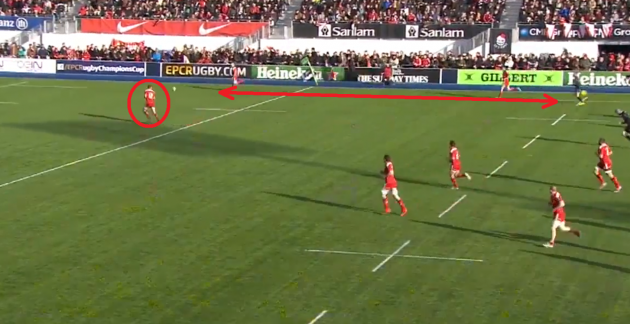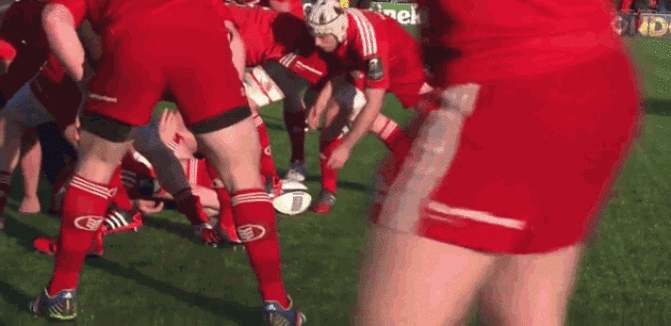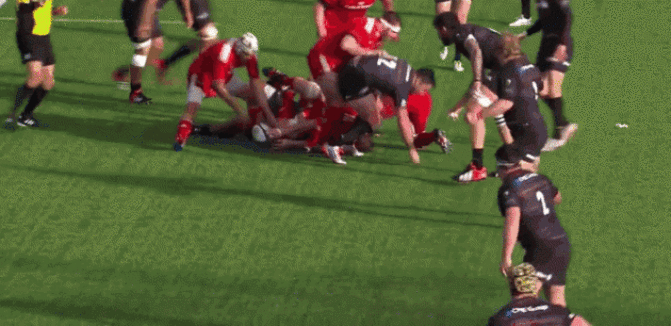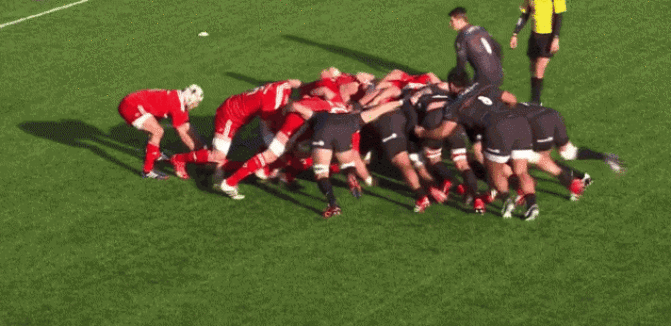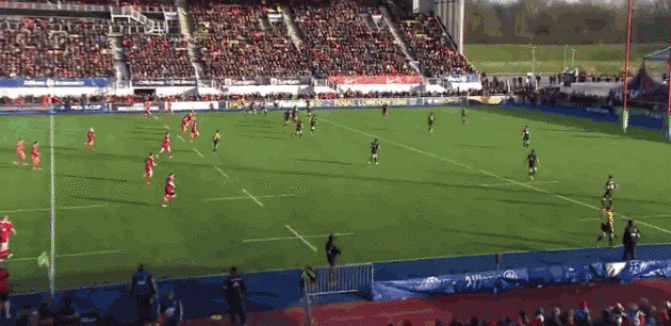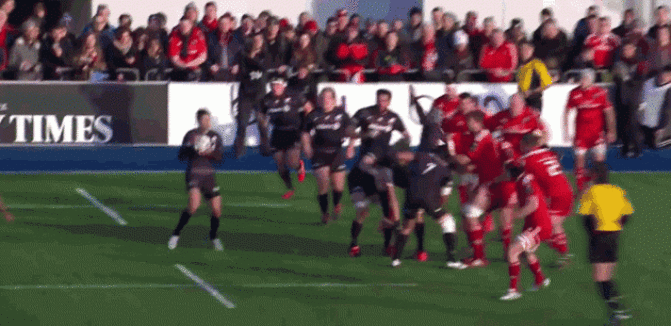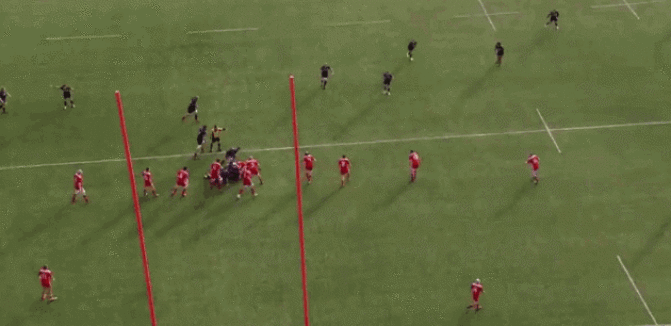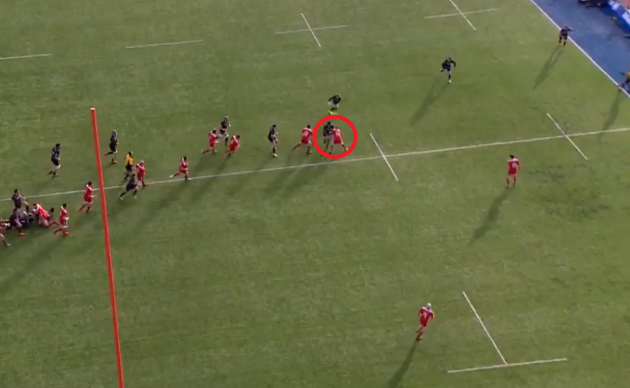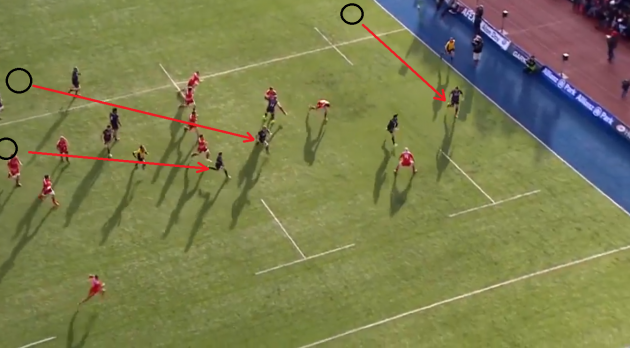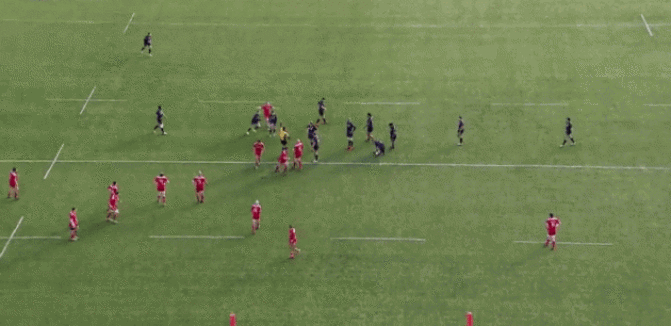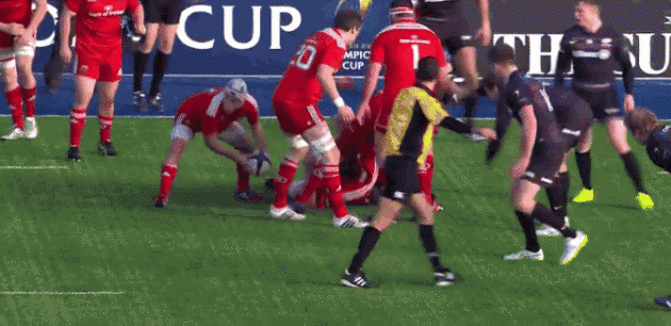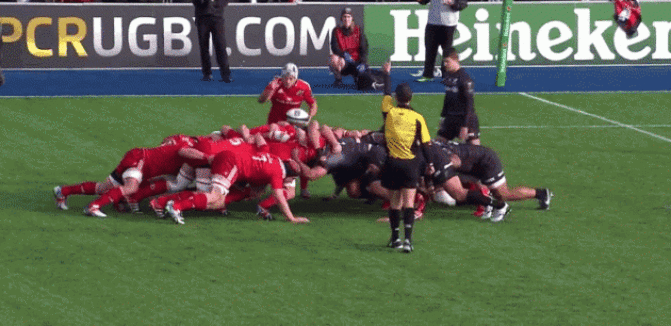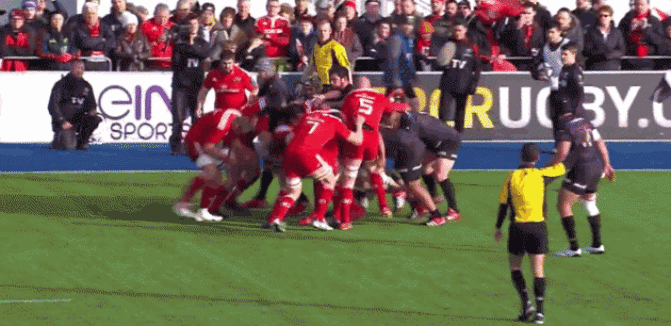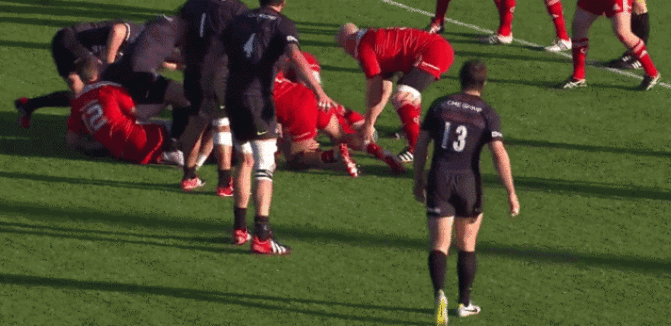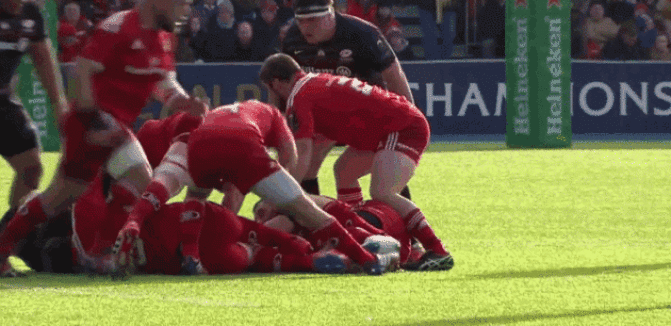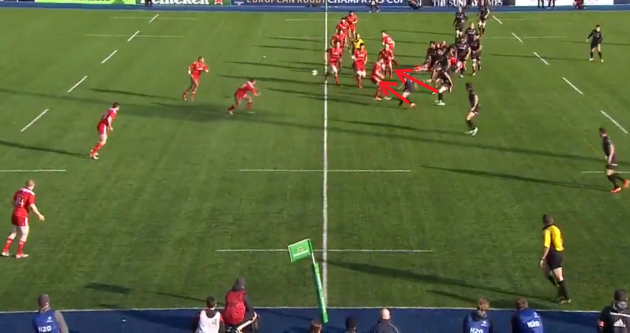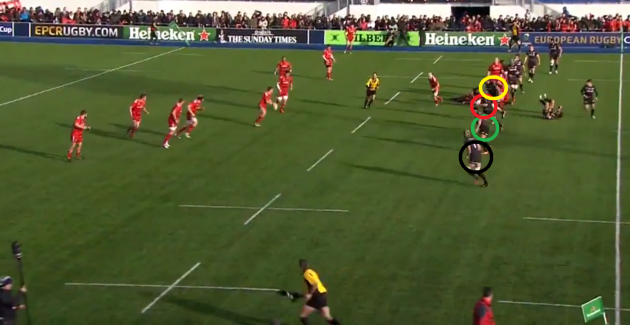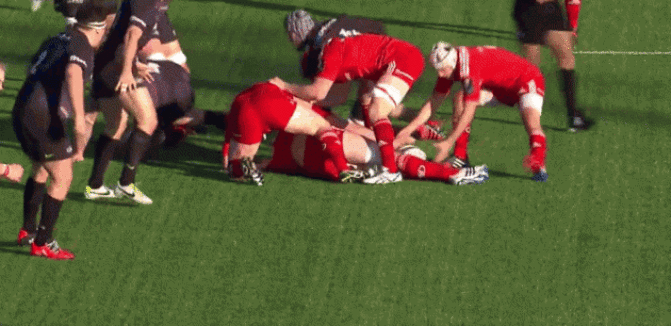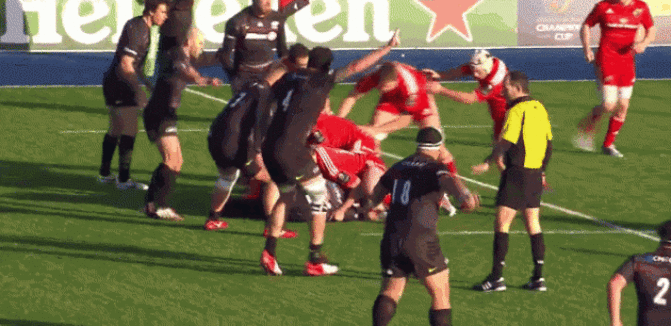IT HARDLY NEEDS to be mentioned that Munster’s performance against Saracens on Saturday was a low point in the province’s grand history in European rugby.
To be beaten so convincingly in an encounter that had make-or-break status will have cut deep. That Munster underperformed so extensively is what will have truly hurt.
Saracens were brilliant, but Munster are a better team than they showed at Allianz Park.
Anthony Foley’s squad never truly looked like Champions Cup winners this season, but this was a wholesale failure of their approach to the game.
The right areas
Much of Munster’s philosophy this season has been about “playing the game in the right areas.” Foley and his players have repeatedly used the phrase in pre and post-match press conferences, underlining that it is more than a cliché at Munster.
Every team in the world wants to spend as much time as possible in the opposition’s defensive area of the pitch, but it’s especially important for Munster. Perhaps believing there to be certain limitations within his squad, Foley has never looked for his team to attack with a great amount of risk or ambition from long-range.
Munster more often kick out of their own half, and do their best to batter into the opposition 22.
Once they get in there, the southern province are remarkably effective. With their pick and gos, deep rucking and work-rate, Munster are excellent at scoring in those visits into the 22.
It’s something they work hard on in training and that investment has been clear to see when Munster have been in opponents’ 22s this season.
Against Saracens, Munster had possession of the ball inside the Saracens 22 just twice over the course of the 80 minute. That is utterly disastrous for a team that simply doesn’t score many tries from deep.
Many factors
Munster did actually spend a fair portion of the game inside the Saracens half, but those possessions [apart] largely saw Foley’s side making few gains between the half-way line and Sarries’ 22, or simply coughing up the pill through their own errors.
On top of that, there were failures in Munster’s own exits from their defensive portions of the pitch, again something they are usually strong at.
There were lots of different factors that went into the above, some of which we’ll look at below, but it’s worth pointing out that Munster’s players simply weren’t in a positive mindset for this game.
Right from the opening five minutes or so, there was an apparent lack of confidence and throughout the game, even the ‘simple’ jobs of rucking and even catching the ball proved difficult.
Whether this was a case of the build-up having been off-key, the loss of Conor Murray impacting on belief or the result of a longer-burning unease within the group, it’s impossible to know from the outside.
We’ll leave the speculation to others, but Foley and Munster will surely have to extensively reviewed the mental aspect of this encounter. As we’ve already mentioned, Munster may not possess world beaters across the board, but they have skilled players who are capable of so much more than we saw on Saturday.
Kicking themselves
A big part of Munster’s approach to winning the territorial battle and limiting attacking chances for the opposition is their kicking game. For that to fail badly at Allianz Park was one of the heaviest blows of the afternoon.
Ireland have led the way in terms of contestable box kicking and it’s something Munster have done well at times this season too. Against Saracens, there were too many instances of overly-long and poor-competed-for box kicks.
We get an early example above, as Duncan Williams’ kick travels too far down the pitch and gives Chris Ashton time on the ball. The former England wing comes up with a beautiful touch of his own, but the bottom line is that Munster end up further back towards their own tryline than they started.
As glaring was the blocked-down box attempt shortly after, as the excellent Jim Hamilton got a strong paw to Williams’ clearance attempt.
Foley would have been looking for far more composure in this situation, a mental attribute that Munster were lacking in last weekend. Williams probably required another blocking player up on the left of the ruck, while he might reflect on the need to take a longer stride back from the ruck before kicking [giving himself more space].
Technical details aside, it was a moment of poor composure and simply piled more weight onto the early lack of confidence.
Similarly, Munster failed to exit just before giving up the penalty that allowed Owen Farrell to open the scoring.
Attempting to run the ball out of their own 22 early in the game was something Munster certainly had not planned for. Williams has Denis Hurley [a former fullback] inside him in this instance and lots of time in which to make a good decision.
A strong kick back to near the half-way line would have been a good return in this case, but instead Williams is caught and the supporting players at the breakdown go straight off their feet in a panicked attempt to rescue the situation.
Even late in the game, Munster were exiting poorly from their own 22, with one of those weak kicks leading to Chris Ashton’s second try.
We see that example above, as Williams’ kick goes low and deep down the pitch, providing Billy Vunipola with time to fire his pass inside. Saracens sweep away to the left and return directly into Munster’s 22 in possession of the ball.
From there, Munster become ragged in defence and Ashton darts in for his second score.
Williams had an extraordinary burden on his shoulder in terms of Munster’s kicking game taking over from Conor Murray, who is excellent in this area. Williams kicked the ball 10 times, while Ian Keatley had just seven touches with the boot.
The kicks Keatley did have were not of the highest quality and, like the box kicking, actually served to put Munster under increased pressure.
Keatley is perhaps unlucky in the instance above as his kick rolls dead when it might have stopped shorter on a normal grass surface. Even still, it goes down as a failure in the kicking game, providing Saracens with an attacking scrum from which they scored their first try.
Below, we get another such example as Keatley looks for a diagonal to Zebo on the left wing but overcooks his kick directly into touch, again allowing Saracens a promising attacking platform.
Losing the influence of Murray was a particular blow for Munster in the area of kicking and without the Ireland scrum-half, this aspect of the game was cripplingly poor.
Switching off on D
Munster had some excellent spells of defence at Allianz Park on Saturday, particularly as Saracens bombarded their 22 in the third quarter. We’ve already highlighted that this was exactly the area Munster didn’t want to be in, so it’s faint praise in a wider sense.
Foley’s men made 113 tackles in total, missing eight. It may not sound like a whole lot of misses, but many of them came on Sarries number eight Vunipola and likely had an effect on the general confidence of the team.
Munster would certainly have stressed their need for a low tackle focus on the England international in the build-up to this game, meaning the misses from Dave Foley, James Cronin and Williams above would have been frustrating for the players themselves.
The chopping didn’t happen every time Vunipola carried, however, and attempts to tackle the 22-year-old around the upper body simply weren’t effective. Dave O’Callaghan is the one shrugged off above, after an attempt he will be unhappy with.
Munster’s tackle percentage on the day was over 90, but there were other lapses aside from missed tackles that proved costly in the outcome.
Chris Wyles’ try is one Munster will feel they certainly should have prevented, as a breakdown in their system allowed Saracens the space to finish. As with everything we touch upon in this piece, the quality of Mark McCall’s side must be taken into account, but our focus is on Munster here.
On the face of things, this defensive failure is all about Andrew Conway’s decision to bite in on the decoy-running Vunipola, who Saracens used so cleverly throughout the game.
Conway’s decision to bite in on Vunipola certainly was a major contributing factor to the try, but defence is not an individual responsibility. It’s a collective duty, so we have to look around Conway in asking questions.
How much communication did he get from inside? Was Hurley [the man directly inside Conway] telling him to push out? Was there any chat at all from the defenders closest to the ruck?
Looking again at the GIF above, we could ask whether Munster’s spacing should have been better. Could Duncan Casey have got slightly wider, freeing up Hurley to drift off Farrell just a fraction earlier? Was the hooker getting talk from inside to allow him to do that?
Yes, Conway would demand a better decision of himself in this situation, but there are so many factors that go into even one split-second call such as this. The failure has to go down as a collective one.
Saracens carried out the play superbly, using Vunipola’s physical threat to sit Munster down on their heels and finishing expertly on the edge. It’s also notable how scrum-half Richard Wigglesworth and flanker Kelly Brown flood into support positions on the inside of Alex Goode before he sends Wyles over.
The Saracens players were clearly working hard to stay alive off the ball, a clear sign of their intent and focus, which contrasted so clearly with Munster’s lack of those mental skills.
Chris Ashton’s first try was equally as revealing in that regard, as the visitors allowed themselves to be caught completely unguarded in defence. Again, it took sublime skill from Saracens to punish Munster’s lack of urgency, but it was a score that could have been prevented.
Saracens play off a Wigglesworth quick tap after Felix Jones is pinged for going off his feet, taking advantage of the total lack of reaction from Munster’s defence.
Obviously Munster are expecting Saracens to kick for touch in this instance, but Foley will have been disappointed by that reaction. After conceding a penalty, the minimum expectation would be to work back 10 metres immediately, all the while scanning the attack.
Instead, Munster have hands on hips, vacantly staring at the referee in apparent disbelief at his decision. Saracens are swift to punish the lack of reaction.
Breakdown discipline
Munster have prided themselves on strong discipline in recent seasons, as well as excellence at the breakdown, both defensively and when they have possession.
In North London, they struggled badly in both areas. 13 penalty concessions to Saracens’ five was another blow to their hopes of building into the game, with many of those infringements coming in post-tackle situations.
Above, we see the penalty concession that allows Saracens to quick tap and score through Ashton. It’s Jones who goes off his feet, hugely uncharacteristically. The fullback possesses superb rucking skills, so to see him go off his feet in this manner was jarring.
Below, it’s Keith Earls who gets pinged for the same offence. A push in the back from Conway as the replacement centre looks to arrive in a low position does not help.
Unfortunate incidents perhaps, but it speaks of the lack of accuracy in this Munster performance, as players who are clearly capable and strong at rucking failed in those duties.
No scrum, no win?
Munster’s issues at the scrum have been pinpointed as one of the reasons for this defeat, although the major effect may have been a psychological one. Saracens did score three points as a direct result of scrum penalties, and perhaps more importantly denied Munster a good platform to play off.
With their kicking game struggling, Foley’s charges needed that set-piece foundation to give themselves any hope of occupying Saracens’ territory, but it simply didn’t happen at the scrum.
There were a handful of examples in a game that featured 16 scrums, but the one above gives up some indication as to how Saracens disrupted any chance of Munster bursting into the home team’s 22 for the first time.
Again, the problems here were collective and quite probably related to mindset, but BJ Botha will have been disappointed by his display against Mako Vunipola, particularly with his contract expiring at the end of the season.
Saracens generally got the stronger eight-man shove in the scrum and their timing was excellent. Again, the contrast was stark.
Handling errors
Almost as frustrating for Munster as the ineffectiveness of their kicking were the numerous handling errors, which also contributed to the struggles to transition out of defensive zones and into areas of the pitch from where they could threaten Saracens.
Zebo spills a simple switch pass from CJ Stander above, as Munster look to break into Saracens’ defensive third of the pitch, wasting good ball from the line-out. In contrast to their defence, Munster seemed too uptight in attack.
Straightforward passes like the one above were going to deck, and it was perhaps most striking because Paul O’Connell made so many errors on the ball. Normally, the Ireland captain is as low-error a player as you will find, so for him to be putting the pill to deck was as jarring as Jones missing rucks.
The lack of composure we’ve already spoken about in regards to the kicking game is relevant here too, as Saracens’ defensive tactics are so deeply rooted in pressurising and stifling the opposition.
Through their counter-rucking and line speed, the ‘Wolfpack’ look to stifle and destroy, but Munster will have been devastated by their inability to retain possession on a number of occasions.
The way forward
Munster’s territory-hungry and narrow-attacking game plan has been very effective on occasions this season, but the impression has also been that it simply wasn’t going to be enough to break down the best teams in European competition.
Foley and his coaches have recognised that themselves, and we have seen Munster slowly look to broaden their attacking approach over the last three months or so. Moving forward, it appears the progress needs to be speeded up.
The ongoing reluctance to use JJ Hanrahan as a playmaking influence at inside centre is difficult to understand, although a return to fitness for new signing Tyler Bleyendaal might see a passing option featuring at 12 for Munster.
We’ve been harping on about variety in Munster’s play for some time now, and spoke about it before this clash with Saracens, as well as the away clash with Clermont.
Direct rugby featuring one-off runners and pick and jams certainly has its place, but the southern province must look for more with their use of possession as they attempt to grow over the coming 18 months or so.
The times Munster looked most threatening against Saracens were when they moved the ball away from the ruck and tested the English side with tempo and width.
We get an example in the GIF above, as Williams flashes the ball away to Keatley and Conway gets some space wide on the right.
It’s noticeable how the Saracens defence is anticipating another narrow attack, leaving themselves susceptible a little wider out. Stander’s decoy run actually serves to sit down two Sarries defenders and frees up that space for the backs to attack.
It’s positive play from Munster, but there were other occasions on which they missed the opportunity to make good yardage with ball in hand. Go back to the GIF of Keatley kicking the ball dead just before Wyles’ try and note the players outside him for one example.
Below is a still as the Munster out-half gets set to kick the ball deep, sticking to Munster’s plan of playing the game in the Saracens half.
There’s another Munster player holding width out of shot on the left, meaning Munster have a 6-on-4 at worst and an excellent chance to break into the Saracens half and stretch the home side’s defence.
In front of them in the defensive line are [from inside out] a lock, prop, hooker and back row – this is the ideal scenario for Munster to run the ball. Yes, they have three forwards of their own in the attacking line, but this is where Hurley [just in behind the pod of forwards] needs to communicate the chance.
Munster simply don’t have their heads up and the ball is kicked away.
Suggestions that Munster don’t have the players to play a more attacking, ball-in-hand style of rugby aren’t wholly fair. We’ve already mentioned Hanrahan [even if he is Northampton-bound], while the likes of Zebo and Conway are at their best in possession.
The play above is a simple screen pass, and not particularly well-executed, but it gives us an idea of the damage Zebo can do when he’s set up to beat defenders one-on-one. Again, it’s a situation that asks greater questions of the Saracens defence.
Zebo can offload the ball too, as he shows late on in the game above, getting the ball around the tackle and releasing Williams. The point here is not to over-hype Zebo’s attacking ability, rather to highlight that Munster have a handful of players with good skillsets in attack.
Forwards like Peter O’Mahony, Tommy O’Donnell, Robin Copeland, Stephen Archer [as below], Mike Sherry, Dave Kilcoyne and James Cronin are all comfortable passing the ball, meaning Munster don’t have to look to a future of only narrow attack and lots of kicking.
There aren’t many who would dispute that the current Munster side are some way off being potential Champions Cup winners, but there are enough elements within the playing group to offer encouragement.
Somehow finding the resources to add two or three high-quality imports to the group does, admittedly, look necessary, and finding the resources to be able to do that looks vitally important. There certainly needs to be a growth of the depth within the squad too.
April will be a particularly tough month for Munster as they watch the European knock-out stages from a rare vantage point on the outside, but it should help drive their ambition to progress in the Pro12 and next season.
Ensuring that they don’t mentally fail to turn up again like they did in Saracens and growing their attacking threat are clear priorities of which Foley will be painfully more aware than anyone.

